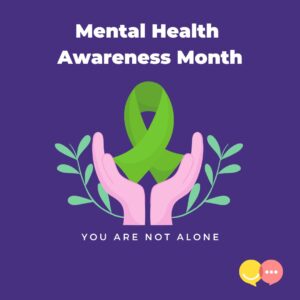Psychological and behavioral approaches for the chronic pain management include a variety of interventions. They aim to achieve increased self-management, cognitive restructuring and behavioral change. They target cognitive, emotional and behavioral components of chronic pain and factors contributing to its maintenance.
Cognitive Behavioral Therapy for pain management
Cognitive Behavioral Therapy (CBT) has been demonstrated to be successful in treating a variety of chronic pain problems. There is good evidence for the efficacy of CBT in improving mood, restoring function and reducing disability-related behavior. CBT is a psychotherapeutic approach that focuses on examining the relationships between thoughts, emotions and behaviors. It is problem-focused and goal-oriented in addressing distressing symptoms.
The therapist and the patient work together to explore patterns of thinking that lead to emotions such as fear, anxiety, stress and sadness. They also explore maladaptive behavioral responses, such as inactivity and fear-avoidance behavior.
The therapist assesses the goals and course of therapy after evaluating the patient’s pain behavior and the relationships between their thinking patterns, emotions and behavior. In addition, the therapist also evaluates if there are any other psychological disorders or problems that may affect a person’s pain behavior.
The main goal for chronic pain treatment is to improve the person’s quality of life through improving mood and confidence, developing coping skills for everyday functioning and increasing activity levels.
The following areas are addressed in therapy:
- Depressive, negative and unrealistic thoughts
- Unhelpful beliefs, fears and attitudes
- Inactivity
Treatment process
Goal setting is an important task in the beginning of the treatment. It gives definition, direction and structure to therapy. Goals need to be personal and well defined depending on the specific circumstances of the patient. Both short-term and long-term goals are formulated. For example, a regular exercise program could be a long-term goal and managing a shower a short-term goal.
When planning to increase activity and improve function, the starting point and baseline is naturally the person’s present level of physical condition, their activity level and the used coping mechanisms.
Coping mechanisms can be adaptive or maladaptive in nature. A patient with adaptive behaviors/beliefs has, for example, an optimistic attitude and a sense of ability to cope with pain. They participate in activities and exercises, are interested in having an active life and continue to work. A patient with maladaptive behaviors/beliefs is, for example, pessimistic and they feel helpless. They believe that exercise will cause more pain, and, hence, lead an inactive life and give up former activities and work. They rely on others’ help.
The treatment and/or activity plan can be explained and shared with the family members as the family’s support is beneficial for the patient.
It is understandable that patients with chronic pain develop fear-avoidance behavior, i.e. they fear that they harm themselves or their pain worsens if they move or exercise. However, they need to realize that maintaining mobility is essential to improve and preserve the physical functions and it also helps circulation.
Pacing of activities means a gradual and systematic increase in activities at a rate the patient can manage.
Having good communication skills makes it also easier to express one’s needs, worries, fears and expectations more clearly which will result in a more effective treatment and personal satisfaction.
Anger is often a natural ‘feeling out-of-control‘ response to pain and suffering. It is important to understand anger and to analyze the thoughts that produce anger feelings in order to find alternative ways to express the emotions so that the person can get relief from frustration in a more constructive way.
Cognitive restructuring
Analyzing thoughts and beliefs about pain is central. The patient is encouraged to monitor and record their thoughts, emotions and behaviors in specific situations. They may have distorted thoughts and beliefs about the nature of pain or the prognosis. The patient may also have distorted thoughts about the meaning of pain, their ability to cope with the pain, or how movement or activity affect the pain. Some people may see themselves as victims , as being punished. Others may be afraid of thinking about going back to work. Our thoughts can determine our emotional state and further affect our behavior.
Cognitive restructuring is about changing the way we feel by changing the way we think. It is a psychological process in which we learn to identify, question and replace irrational beliefs and thoughts with more adaptive alternatives. When we have an automatic thought such as ‘I’m helpless, the pain is everywhere‘, we need to question and restructure it to be more adaptive and positive. If we do not do this, we start feeling helpless and depressed with no hope of getting better. When we engage in a more constructive way of thinking, this leads to better balanced emotions. It also leads to more confidence in our ability to cope as well as reducing our fear-avoidance behavior.
Relaxation techniques for pain management
Chronic pain produces a lot of stress and tension both mentally and physically. Stress and tension in return affect the pain experience in a further negative way. As a result, the cycle of pain, stress and tension may become out of control. Many people find it helpful to use relaxation techniques in combination with CBT.
Deep breathing
Deep breathing or diaphragmatic breathing is a basic, simple and effective relaxation technique. It interrupts the anxiety response and triggers the body’s normal relaxation response.
Progressive Muscular Relaxation
Progressive Muscle Relaxation (PMR) is another common relaxation technique. PMR teaches us how to relax the different muscle groups of the body. This is done through an easy two-step process. First we tense a muscle group and then we relax it. As we practice, we learn to know the difference between how they feel.
Mindfulness techniques
Mindfulness is a cognitive meditation and relaxation technique. While concentrating on our breathing, we focus our awareness on the present moment. We become aware of all our incoming thoughts, feelings and bodily sensations. We practice not not reacting to or judging them. Instead, we just accept them and let them be as they continuously come toward and move away.
Focusing on fighting the painful feelings takes a lot of energy and it only makes the pain feel stronger. Acceptance in the context of pain and mindfulness means seeing reality for what it is. The pain is there and may not go away. We need to acknowledge the pain. We may need to make room for the painful feelings and sensations. Then, they can come and go without draining and overwhelming us. If we accept our pain, instead of seeing it as a an enemy, our mind and body will be more relaxed. This results in less tension and reduced pain as time goes by. Letting the pain on its own allows space to take in and focus on more positive thoughts and emotions.
Acceptance doesn’t mean submitting to pain, to give up. When we allow pain to ‘walk on our side‘ it does not block our way or our view. The person is no more defined by the pain.
Managing medication
Another goal in therapy is to reducing dependence on medication. Successful treatment of chronic pain must include improvement of function as well as reduction of pain level.
Sometimes the patient and the care team need to discuss the delicate balance between heavy medication to eliminate pain that may leave the patient sedated and inactive, and the need to improve functioning that means a mentally and physically healthier life.
Learning from pain
We may see chronic pain seen as a period of transition. This gives us an opportunity to reflect, review, learn and discover new ways of living, doing and being.
We have a saying ‘Pain is inevitable, suffering is not‘. This means that we have control over and can choose how we respond to pain. It is important to focus on positive things, create distractions from pain, learn good coping skills and adapt to a more active lifestyle. To remember personal and desired goals will inspire and motivate in times when there are doubts. Chronic pain may also teach us to respect ourselves, listen to and have a better connection to our mind and body. Our pain can teach us to value compassion and forgiveness, and to deal with imperfection. It can enrich our sense of self and affect our identity in a positive way.
It may not be possible to change the situation that you live with chronic pain. However, you do have a choice in how to respond to it.
Read more about pain in our post here.
OCP Medical Center is a specialist pain clinic in Dubai.





